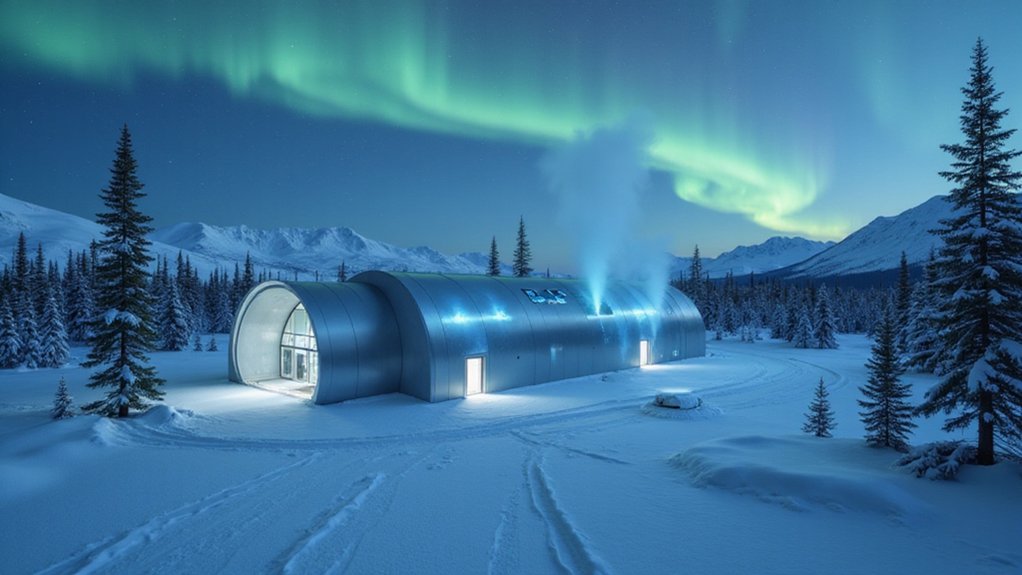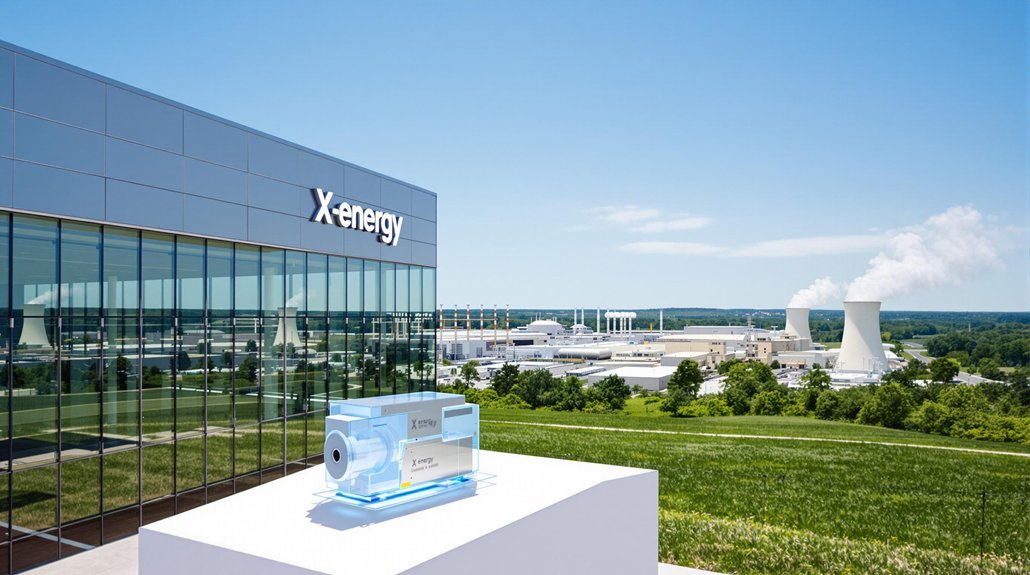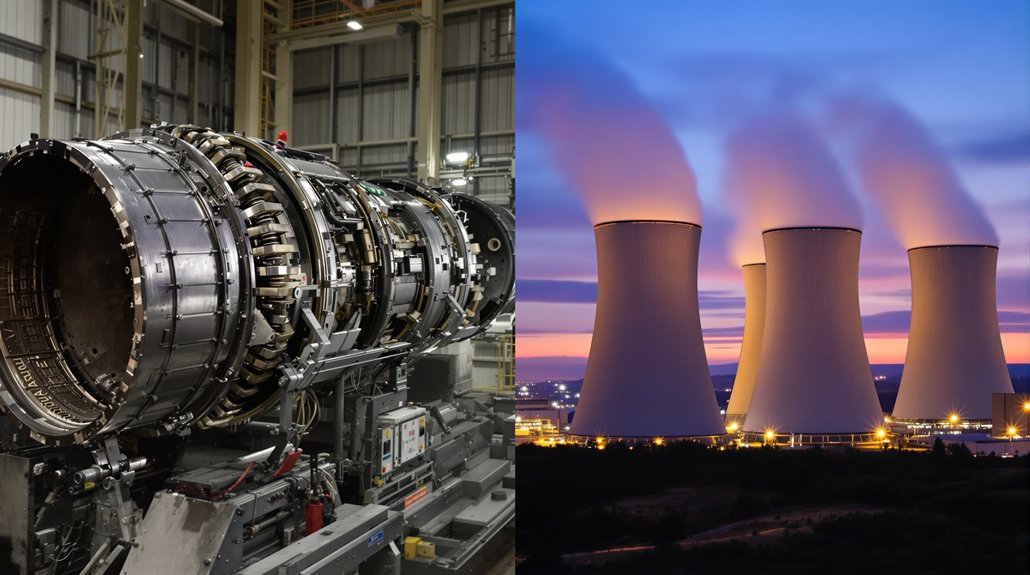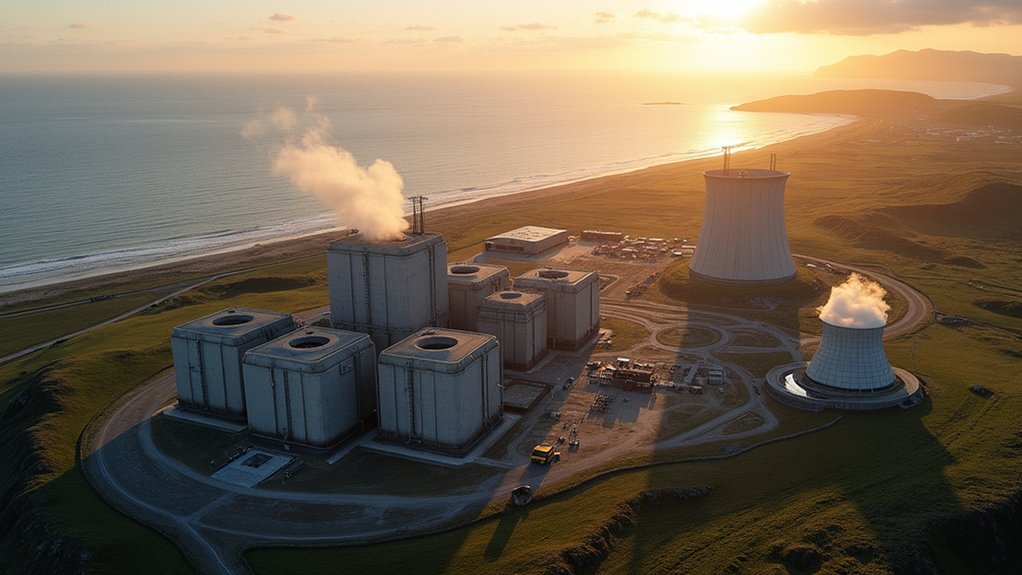While the rest of the world debates energy policy, the Air Force just cut through the noise and picked Oklo Inc. to build a nuclear microreactor at Eielson Air Force Base in Alaska. The 5-megawatt Aurora powerhouse marks a stark shift from the base’s current energy setup. No more coal dependency. No more grid vulnerabilities.
The Defense Logistics Agency Energy ran the selection process, and Oklo came out on top. They’ll design, construct, own, and operate the whole thing under a long-term power purchase agreement. Translation: the military gets clean power without the headache of running a nuclear plant. Smart move, honestly.
Eielson sits in a strategic location that matters for national security. But Alaska isn’t exactly known for its stellar energy infrastructure. The base needs reliable power, period. Cyberattacks, natural disasters, grid failures – these aren’t theoretical concerns when you’re running critical military operations. A self-sufficient nuclear microreactor solves those problems in one shot.
The timeline? End of this decade. That’s actually pretty aggressive for a nuclear project, but microreactors aren’t your grandfather’s nuclear plants. They’re smaller, scalable, and way less complicated. While Western nuclear projects typically face significant delays and cost overruns, these smaller designs aim to avoid those pitfalls. Oklo’s technology can produce units ranging from 15 to 50 MW, giving the military flexibility for different installation needs. The Air Force plans to expand this to nine bases total through their Advanced Nuclear Power for Installations program. Apparently, they’re done messing around with unreliable energy sources.
Here’s what makes this interesting: nuclear microreactors pump out zero CO2 emissions while delivering consistent power. The environmental angle matters, sure, but the real win is energy security. When your power source sits right on base and doesn’t need fuel deliveries or grid connections, that’s a game-changer for military readiness.
The partnership between Oklo and the Department of Defense represents something bigger than just one base getting a fancy new reactor. It’s the military industrial complex actually innovating for once. This development fits into the broader landscape of corporate strategies where defense contractors and energy companies are finding new ways to collaborate on critical infrastructure projects. While everyone else talks about clean energy shifts, the Air Force just went ahead and did it.
The operational cost savings alone will probably justify the investment, but the enhanced mission capabilities? That’s the real prize.
References
- https://www.marketscreener.com/quote/stock/OKLO-INC-124598202/news/Oklo-Inc-Selected-as-Intended-Awardee-to-Provide-Clean-Reliable-Power-to-Eielson-Air-Force-Base-in-50215266/
- https://www.streetinsider.com/Corporate+News/Oklo+(OKLO)+Selected+as+Intended+Awardee+to+Provide+Clean
- https://www.gurufocus.com/news/2920780/oklo-selected-as-intended-awardee-to-provide-clean-reliable-power-to-eielson-air-force-base-in-alaska-oklo-stock-news
- https://www.airandspaceforces.com/air-force-nuclear-microreactor-eielson-and-more/








